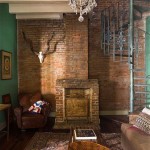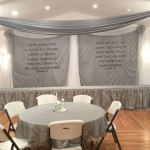How To Decorate a Living Room With a Front Door In The Middle
A centrally located front door in a living room presents unique decorating challenges. It can disrupt the flow of the room and make creating distinct functional zones difficult. However, with careful planning and strategic design choices, a living room with a centered front door can become a welcoming and stylish space. This article outlines key strategies for achieving this.
Defining Zones: One of the primary challenges with a central front door is the lack of a natural wall to anchor furniture arrangements. The solution lies in creating distinct zones within the living room. One can achieve this by using area rugs to define conversational areas, placing furniture strategically to create visual boundaries, and employing different lighting schemes to highlight specific zones. For instance, a rug placed in front of a sofa can delineate a seating area, while a separate rug in another part of the room might define a reading nook.
Furniture Placement: Careful furniture placement is crucial in a living room with a centered front door. Avoid placing large furniture pieces directly in front of the door, as this can obstruct entry and create a cramped feeling. Instead, consider flanking the door with smaller pieces like console tables or accent chairs. Positioning the main seating area, typically a sofa and armchairs, slightly away from the entryway creates a more inviting and functional layout. This arrangement allows for a clear pathway from the door while establishing a comfortable conversational space.
Creating a Focal Point: Establishing a focal point draws the eye away from the central door and provides a visual anchor for the room. A fireplace, a large piece of artwork, or a striking entertainment center can serve as a focal point. Arrange furniture around this focal point to create a cohesive and balanced design. If the living room lacks a natural focal point, one can create one using a strategically placed mirror, a gallery wall, or a large, eye-catching plant.
Utilizing Symmetry: A centered front door lends itself well to symmetrical design. Flanking the door with identical elements, such as matching console tables, lamps, or decorative objects, can create a sense of balance and order. Symmetry can also be incorporated into the furniture arrangement, with matching chairs or sofas placed on either side of the focal point. This technique enhances the feeling of visual harmony and creates a more structured environment.
Lighting Considerations: Strategic lighting can significantly impact the overall ambiance and functionality of the living room. Utilize a layered lighting approach, combining ambient, task, and accent lighting. Overhead lighting provides general illumination, while table lamps and floor lamps offer focused light for reading or other activities. Accent lighting can highlight artwork or architectural features, adding depth and visual interest. Placement of lighting fixtures should also consider the entryway, ensuring adequate illumination for safe entry and exit.
Color Palette and Textures: The choice of colors and textures plays a vital role in creating a cohesive and inviting atmosphere. A light and neutral color palette can make the room feel more spacious and airy, while pops of color can be introduced through accent pillows, throws, and artwork. Incorporating a variety of textures, such as plush rugs, woven throws, and textured wall coverings, adds depth and visual interest to the space. Carefully consider the impact of color and texture on the overall aesthetic and the flow of the room.
Window Treatments: Window treatments can significantly impact the perceived size and shape of the room. If the living room has ample natural light, consider using sheer curtains or blinds to allow light to filter through while maintaining privacy. In rooms with less natural light, opt for lighter-colored drapes or blinds to maximize brightness. The style of window treatments should complement the overall décor of the room and enhance the sense of balance and harmony.
Entryway Definition: While the door is in the middle of the room, it's still essential to define the entryway area. A small console table placed against a nearby wall or a strategically positioned rug can create a visual separation between the entryway and the main living space. This helps to delineate the transition between the outside and inside and provides a practical spot for keys or other small items.
Traffic Flow: Consider the natural traffic flow through the room when arranging furniture. Ensure that there are clear pathways from the front door to other areas of the house. Avoid placing furniture in areas that will obstruct movement or create bottlenecks. This careful consideration of traffic flow contributes to the overall functionality and comfort of the living room.
Accessorizing: Adding decorative accessories, such as artwork, plants, and decorative objects, can personalize the space and enhance its visual appeal. However, avoid cluttering the room with too many accessories. Select a few key pieces that complement the overall décor and add personality to the space. Carefully curated accessories contribute to a more polished and cohesive look.

Front Door Opens In Middle Of Living Room Google Search Craftsman Beach Style Wingback Chair

How To Decorate When Your Front Door Opens Into Living Room Corbin Page Interiors Livingroom Layout Remodel Furniture

Front Door Opens Into Living Room

What If The Door Opens Right Into Living Room

Working With No Foyer Emily A Clark

Small Living Room Front Door In The Middle

Front Door Opens Into Middle Of Living Room Help Small Rooms Ideas

I Have A Long Narrow Living Room Approximately 28 X 15 The Front Door Is Right In Middle Of One Side Has Fireplace Opposite Wall

Front Door Opens In Middle Of Living Room

How To Decorate A Living Room With Front Door In The Middle Organized Apartment
Related Posts







